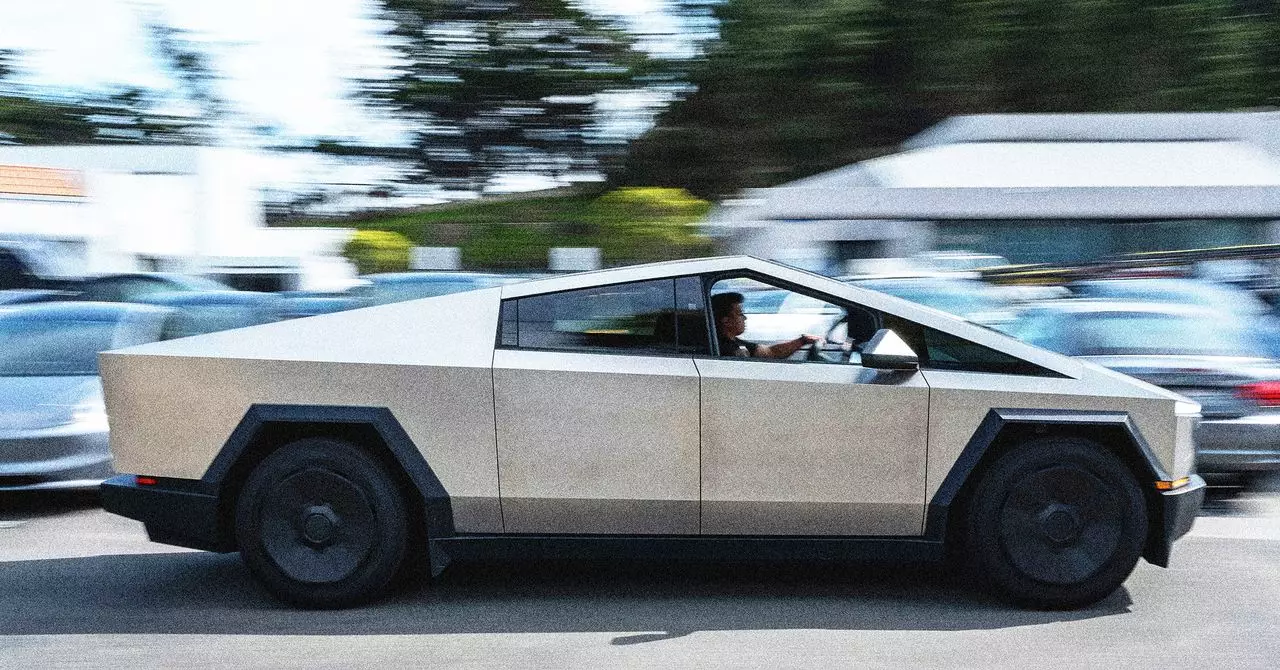Tesla has become synonymous with innovation in the automotive industry, pushing boundaries and setting trends with its all-electric vehicles. However, the company’s recent decision to recall nearly all Cybertrucks produced so far—over 46,000 units—over a potential issue with a stainless steel trim panel has raised eyebrows. Unlike the typical software updates Tesla is known for, this recall demands that trucks be taken into service centers for physical repairs. The adhesive used for a cosmetic panel on the vehicle’s exterior has been flagged for its potential to detach while the truck is in motion, creating not only a hazard for other road users but also a dent in Tesla’s otherwise sterling reputation for quality control.
Root Causes and Production Concerns
The adhesive problem, identified as a kind of glue becoming compromised, raises serious questions about the cybernetic attributes of this futuristic truck. It is telling that while many recalls can be rectified with an over-the-air update—seemingly a hallmark of Tesla’s modern engineering—this particular situation insists on physical, hands-on repairs. Industry experts, including Dale Harrow from the Royal College of Art London, have highlighted that while adhesives are commonly used in automotive construction today, the unconventional use of stainless steel in the Cybertruck may have contributed to this anomaly. Harrow notes that each adhesive type is selected based on various factors, such as material compatibility and bonding strength, implying that a mismatch might lie at the heart of this issue.
Upon digging deeper, one can speculate whether the production teams are facing challenges unique to stainless steel that traditional materials do not present. Is the soldering process being impacted by weather conditions, particularly in colder regions, where the metal may conduct temperature differently? Harrow suggests that issues in the UV curing process and bonding temperatures could also play a role in this misstep. That raises legitimate concerns—are the production techniques adaptable enough to handle the idiosyncrasies of stainless steel?
The Broader Implications
The ramifications of this recall extend beyond mechanics. Tesla, a company that touts itself as a pioneer in sustainable technology, should be particularly vigilant about quality assurance, especially when fears about product safety arise. This recall is significant because it is not simply a matter of inconvenience; it speaks to Tesla’s ongoing narrative of technical mastery and trust.
Social media platforms have become a bustling hub of discussion surrounding this issue, creating a filter that amplifies consumer doubts. The core of Tesla’s appeal lies in its branding as a forward-thinking, reliable alternative to traditional gas-guzzlers; any whiff of unreliability in its product line risks alienating a loyal customer base. As complaints surfaced online, it seems the company decided that freezing Cybertruck production was a more responsible decision than launching half-baked fixes on a model that is already a landmark vehicle in electric history.
The Path Ahead
Going forward, Tesla’s course of action will attract close scrutiny. The company has committed to re-engineering the bond using a more robust adhesive solution not susceptible to temperature-driven degradation. It is vital that the company’s engineering teams thoroughly vet this solution, ensuring that the fix doesn’t merely patch over the cracks but addresses foundational issues.
In a marketplace increasingly sensitive to brand reputation and ethical considerations, Tesla cannot afford to let this blemish define the Cybertruck’s legacy. As the energy and transportation sectors evolve, consumers will expect not just innovation but also reliability—both in the stewardship of groundbreaking machines and the integrity of their construction processes. At this juncture, Tesla stands at a crossroads; it has a choice between reinforcing its image as a tech marvel or facing the possibility of becoming just another brand grappling with the pitfalls of hasty innovation.

